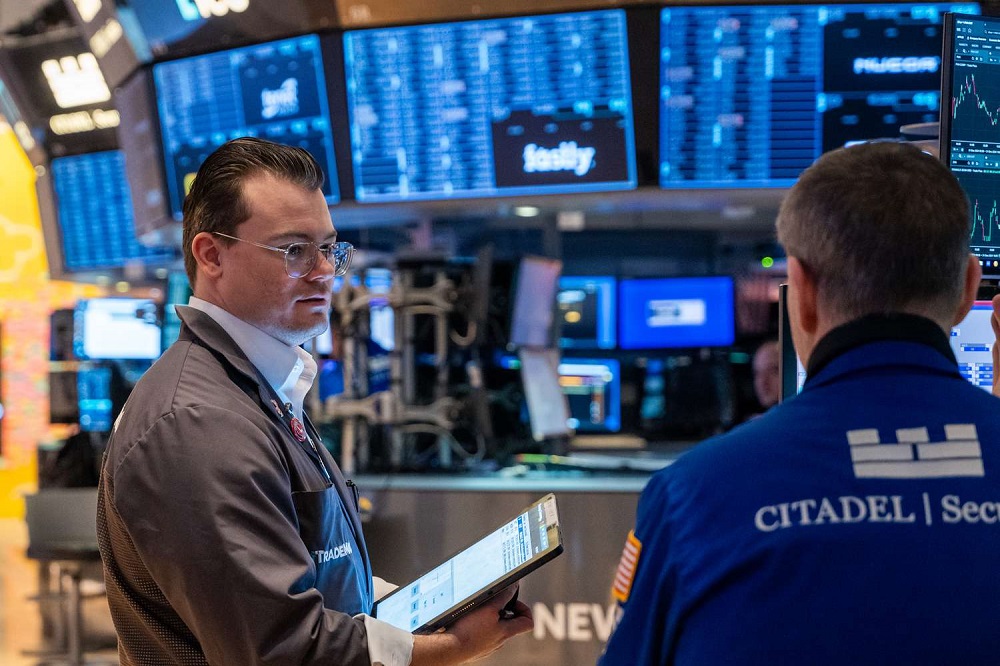Investors may face two levels of concentration risk
Investors may face two levels of concentration risk: too much concentration in the US, and too much concentration in certain stocks that have driven US outperformance.

Forecasts for global financial market performance this year seem quite positive in spite of all the uncertainty over issues such as tariffs, military cconflicts,and more. Analysts seem to be looking for decent strength in equity prices, lower bond yields, no reversal of narrow corporate bond spreads, and a slightly weaker US dollar. But there are risks to this benign scenario, and one of them is concentration risk.
Simply put, the US stock market has accounted for pretty much all of the rise in global stocks recently, and, within the US, there’s concentration as well as the so-called ‘magnificent seven’ stocks, which have contributed over half of last year’s rise in the S&P. But there does not just seem to be concentration risk within the US because the outperformance of US stocks has sucked significant foreign inflows into US assets, and often at the apparent expense of investments in other stock markets.
According to the Fed’s data, foreign ownership of US financial assets stands at USD56.4tr (Q3 2024) and, of this, around USD15tr is in debt securities and USD16tr in stocks. Overseas holdings of US stocks have practically doubled from levels seen just before the pandemic, and, while a large part of the rise reflects valuation gains, the inflows have still been very substantial. Does this leave overseas investors facing two levels of concentration risk: too much concentration in the US, and too much concentration in certain stocks that have driven US outperformance?
The argument for maintaining this concentration is that everything will be ok as long as the US exceptionalism story continues, and particularly in the AI space given the particular importance of Nvidia in driving the US stock market. Is this sound, or does it smack of the years ahead of the 2008 global financial crisis (GFC) when those investors buying up large amounts of US sub-prime mortgages were assured that everything would be OK as long as the housing market did not collapse? That, of course, was a story of banks trying to create diversification, not concentration, by packaging risky subprime mortgages together on the assumption that not all mortgage holders would default at the same time. That assumption proved incorrect, of course, as the whole housing market collapsed.
Coming back to today, is there too much faith being put in a small number of assets (such as US AI stocks) that risks not just a fallout in stocks and big losses for domestic investors, but perhaps even bigger losses for overseas investors should the dollar plunge as well? Steven Barrow, Head of Standard Bank G10 Strategy, said on the surface there seem to be two reasons to say ‘no’.
The first is that this US exceptionalism could be enhanced still further by the incoming administration as it seeks things like corporate tax cuts, looser regulation, and forcing US companies to reshore activity and profits back to the US.
A second issue is that both domestic and global investors do not seem overstretched or leveraged as they were in the pre-GFC years. But does this guarantee that the current situation can persist and these benign expectations about asset performance in 2025 will prove correct? In Steven Barrow’s opinion, there are risks.
One is that one, or more of the stocks that have propelled the US equity market will implode for whatever reason. But that’s clearly hard to predict.
Another is that overseas investors lose faith in the US for whatever reason. If this happens, it seems more likely to stem from declining faith in the bond market, as the new administration’s policies to turbocharge US exceptionalism could come at the cost of a vastly inflated budget deficit.
The third risk is that non-US assets start to look more attractive than US assets. This could happen because growth picks up strongly in places like Europe and China.
In sum, this concentration risk is certainly worth bearing in mind because it seems to be significant and could, in a worst-case scenario, inflict big losses on investors should it lead to an asset price inflation. Is this likely to happen in 2025? Steven Barrow thinks not, even if the risks are undoubtedly increasing.








